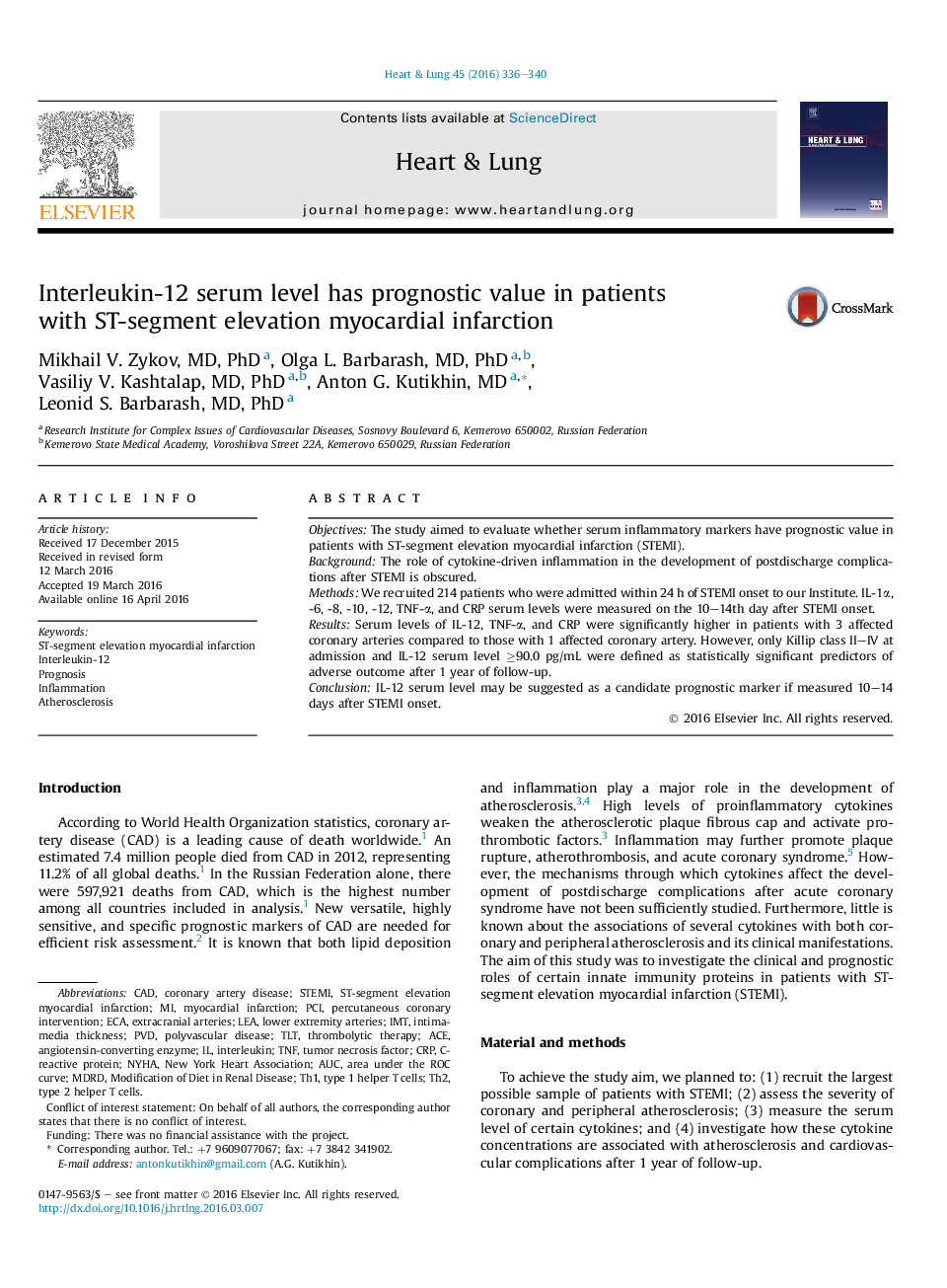| Article ID | Journal | Published Year | Pages | File Type |
|---|---|---|---|---|
| 2650981 | Heart & Lung: The Journal of Acute and Critical Care | 2016 | 5 Pages |
ObjectivesThe study aimed to evaluate whether serum inflammatory markers have prognostic value in patients with ST-segment elevation myocardial infarction (STEMI).BackgroundThe role of cytokine-driven inflammation in the development of postdischarge complications after STEMI is obscured.MethodsWe recruited 214 patients who were admitted within 24 h of STEMI onset to our Institute. IL-1α, -6, -8, -10, -12, TNF-α, and CRP serum levels were measured on the 10–14th day after STEMI onset.ResultsSerum levels of IL-12, TNF-α, and CRP were significantly higher in patients with 3 affected coronary arteries compared to those with 1 affected coronary artery. However, only Killip class II–IV at admission and IL-12 serum level ≥90.0 pg/mL were defined as statistically significant predictors of adverse outcome after 1 year of follow-up.ConclusionIL-12 serum level may be suggested as a candidate prognostic marker if measured 10–14 days after STEMI onset.
